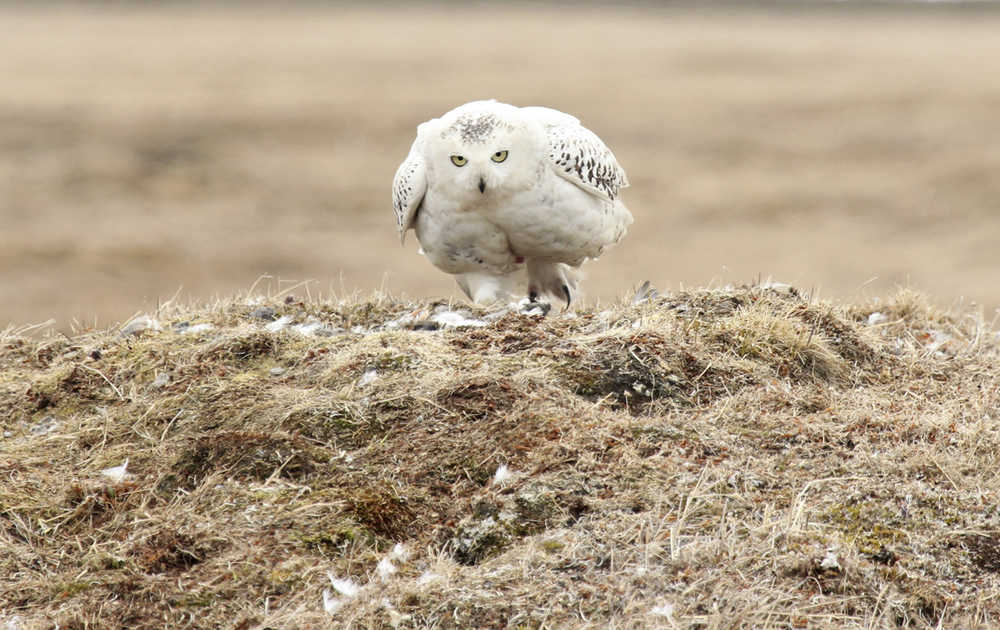ANCHORAGE — A high-definition camera trained on a burrow near the nation’s northernmost city is allowing researchers and any bird viewer with an Internet connection an unfettered view into the nesting den of an Arctic snowy owl.
The camera went live this week and is trained on the nesting site where as many as six chicks are beginning to emerge from a burrow near Barrow, Alaska, on the coast of the Arctic Ocean.
Researcher Denver Holt of the Owl Research Institute in Charlo, Montana, is in the 23rd year of a longterm study of the owls and their main prey, brown lemmings, over a 100-square mile area on the tundra of northern Alaska.
“You’re not able to watch the birds 24/7, even with 24 hours of daylight,” he said by telephone from Barrow on Wednesday. “By having the camera, it just opens up another avenue and more periods of time we’re able to look and record.”
The camera is the latest addition in the Pearls of the Planet offerings of explore.org, the media division of the Annenberg Foundation, which provides live feeds from cameras directed on wildlife across the world.
Another popular Alaska camera feed on explore.org also went live this week, featuring the brown bears at Katmai National Park and Preserve as the bruins patrol the river and attempt to catch salmon at Brooks Falls.
“These live cams are about more than providing an incredible view of bears or owls during an amazing part of their season,” Charles Annenberg Weingarten, explore.org founder and Annenberg Foundation vice president, said in a statement emailed to The Associated Press.
“What we are doing is building out the zoos of the future, where animals run wild and people from everywhere can feel connected to the experience,” he said.
It’s also intended to be an interactive experience with Katmai rangers, Holt and others associated with different cameras interacting with viewers on the explore website.
The camera trained on the snowy owl is allowing Holt glimpses into the daily lives of the birds, like noting how many times a male will bring food to the female to monitoring the eating habits of both parents. The microphone on the remotely controlled camera allows researchers to hear what is happening.
“Some of the stuff might be science for the sake of science, like how often does she sleep?” he said.
But he gets excited by the answer.
“It’s just phenomenal to me that these females sit on the nest and they appear to sleep very little,” he said. “They’re constantly vigilant for potential threats to the nest, predators.”
He said it’s fascinating to see the females take breaks from the eggs and chicks, possibly to go to the bathroom, to stretch, to just get away for a little Mom time.
“We’re learning how often she just might take a break from her parental duties, but she’s always nearby,” Holt said.
The Cornell Lab of Ornithology is also a partner in the snowy owl project.
Online:
explore.org
www.owlinstitute.org
www.birds.cornell.edu

